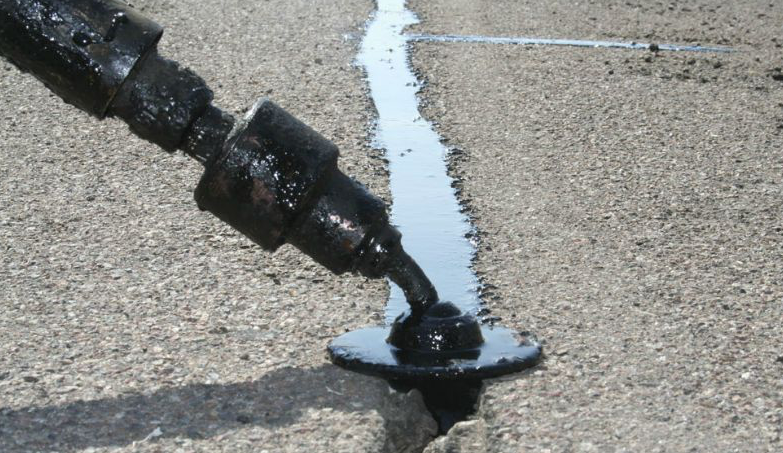Long-lasting Outcomes: Asphalt Patch Repair With Accuracy Sealing
Cold Mix Asphalt Vs. Hot Mix Asphalt: Which Is Right for You?

Composition Distinctions
Cold mix and hot mix asphalts vary considerably in their make-up, with distinct qualities that influence their efficiency and applications. Cold mix asphalt is created by emulsifying the asphalt binder with water and an emulsifying agent prior to mixing it with aggregate. This approach permits the asphalt to be convenient at lower temperature levels, making it perfect for short-lived repairs and for use in colder climate condition. Hot mix asphalt, on the various other hand, is manufactured at high temperatures, normally between 300-350 ° F, which assists to attain much better compaction and a much more sturdy end product. The hot mix asphalt production process entails warming the accumulation and asphalt binder separately before combining them at the asphalt plant.
Moreover, cold mix asphalt has a tendency to be less thick and extra adaptable than warm mix asphalt. This adaptability makes it much better suited for areas with higher degrees of motion, such as driveways or roads with hefty web traffic. On the other hand, hot mix asphalt is recognized for its high toughness and resistance to rutting and breaking, making it a recommended selection for freeways and high-traffic roads where longevity is crucial.
Setup Refine Differences
The procedure of installing cold mix and warm mix asphalt exhibits significant variances in their needs and procedures. In contrast, warm mix asphalt requires a more intricate installation procedure. Due to the home heating demands, warm mix asphalt setups are normally lugged out by experts with specific tools, guaranteeing a more long-term and structurally audio outcome.
Sturdiness and Durability Aspects
When considering asphalt options, resilience and long life are crucial variables to review for long lasting sidewalk efficiency. Warm mix asphalt (HMA) is known for its exceptional longevity and longevity.
In terms of longevity, HMA normally exceeds CMA as you can try this out a result of its superior strength and resistance residential or commercial properties. HMA pavements have a longer life span, requiring less regular fixings and maintenance, which can convert to set you back savings over time. In addition, HMA sidewalks are much more easily adjustable to fulfill certain project needs, better improving their longevity.
Price Considerations
Taking into consideration the economic effects is an essential element when assessing the choice in between warm mix asphalt (HMA) and cool mix asphalt (CMA) for pavement projects. While the first price of warm mix asphalt is generally greater than that of chilly mix asphalt, HMA typically offers an extra cost-effective option over time due to its premium longevity and durability. HMA is known for its capability to endure rush hour lots and rough climate condition, lowering the demand for regular repairs and maintenance. On the various other hand, chilly mix asphalt is extra inexpensive upfront yet might require even more regular patching and resurfacing, resulting in greater maintenance prices in time.
In addition to material prices, it's vital to take into consideration the costs linked with installation and maintenance when contrasting HMA and CMA. Ultimately, the decision in between HMA and CMA should take into account not simply the first cost however additionally the long-term monetary implications to identify the most affordable alternative for the particular pavement task.
Environmental Impact Comparison
Comparison of the ecological influences between hot mix discover this asphalt (HMA) and chilly mix important site asphalt (CMA) discloses distinctive differences in sustainability methods. HMA manufacturing calls for high temperature levels, resulting in boosted power intake and greenhouse gas exhausts. The process also releases unstable organic compounds (VOCs) and harmful air toxins (HAPs) right into the atmosphere. In contrast, CMA is created and applied at lower temperatures, minimizing power use and discharges dramatically. The reduced manufacturing temperature levels of CMA cause lowered gas intake and reduced degrees of carbon dioxide emissions, making it a more environmentally friendly option.
In addition, the usage of CMA frequently entails recycling existing asphalt pavement, promoting source conservation and reducing the quantity of waste sent to garbage dumps. By opting for CMA over HMA, roadway construction tasks can contribute favorably to environmental preservation initiatives.
Final Thought
To conclude, the selection between chilly mix asphalt (CMA) and warm mix asphalt (HMA) depends on different variables such as composition, setup procedure, resilience, durability, price, and ecological impact. angle parking. While CMA supplies a economical and fast remedy for minor repair work, HMA makes sure premium durability and longevity for heavy web traffic areas. Think about these aspects meticulously to identify which kind of asphalt is the appropriate option for your paving requires

Taking into consideration the economic implications is an important element when reviewing the selection between warm mix asphalt (HMA) and cold mix asphalt (CMA) for pavement jobs. While the first cost of hot mix asphalt is generally greater than that of cold mix asphalt, HMA commonly offers a more affordable solution in the lengthy run due to its remarkable durability and durability. cold mix asphalt.Contrast of the environmental impacts in between warm mix asphalt (HMA) and chilly mix asphalt (CMA) exposes distinct differences in sustainability methods.In conclusion, the choice between chilly mix asphalt (CMA) and warm mix asphalt (HMA) depends on various elements such as composition, installation process, sturdiness, long life, price, and ecological effect